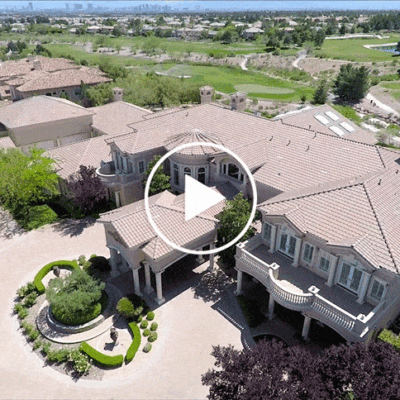The world is full of jawdropping destinations — trust us, we know — but Pakistan may well be up there with the very best of them. From soaring Himalayan peaks where elusive snow leopards reign to colourful bazaars selling all manner of trinkets — this captivating destination is a real gem. No wonder then that it’s earned a spot on our trendsetting Where to Travel in 2025 list. And the best part? Your groundbreaking trip helps us lift up local communities in this often overlooked country. So, without further ado, here’s our roundup of 14 places to visit in Pakistan:
1. Lahore
As Pakistan’s second-largest city and the capital of its Punjab province, Lahore has plenty going for it. It’s a cultural behemoth and home to two UNESCO World Heritage Sites — the mighty Lahore Fort, dating all the way back to 1566, and the manicured Shalimar Gardens. Both are full to the brim with magnificent Mughal architecture, and if you’re wanting to continue the history train, then make your way to the Badshahi Mosque.
Completed in 1674, it’s one of the world’s most striking buildings, and if you’re here as the sun is setting, it’s an experience you really won’t forget in a hurry. But Lahore isn’t all about history — as impressive as that is. It’s also famous for its culinary scene, with dishes originating from here including chicken lahori and the succulent gosht karahi.
Admire Mughal magnificence on: Pakistan: Lahore & Hiking the Karakoram Mountains

2. Islamabad
From one city to another now — and actually onto the capital city thank-you-very-much. Home to over a million people, Islamabad is a thriving metropolis with plenty to see and do. Head on up to the hilltop garden of Daman-e-Koh — from where you can enjoy sweeping cityscape views — or visit the Pakistan Monument shaped like a petal and dedicated to the people of Pakistan.
One thing you really can’t miss while you’re here is paying a visit to the Faisal Mosque — which was designed to look like a bedouin tent. It’s a spellbinding place — particularly as dusk is beginning to fall and you can hear the call to prayer echoing over the nearby valley.

3. Wagah
Site of the famous Wagah Border Ceremony — a daily event taking place right on the border of Pakistan and India — Wagah is a must on any trip to Pakistan. So, what does this ceremony entail? Well, for context, it’s a daily military drill designed to serve as a reminder of the complex history and cultural ties between both India and Pakistan.
Taking place at the border post between the two countries, it’s a tradition going on since 1959 and characterized by dance-like leg-raising, foot stomping and flag-lowering — culminating in a hand-shake between the two nations right at the end. It’s an ostentatious display and well-worth seeing to get an insight into Pakistan’s history and rivalry with its eastern neighbour.

4. The Karakoram Highway
Often dubbed the ‘Eighth Wonder of the World’, the breathtaking Karakoram Highway really needs to be seen to be believed. Linking Pakistan with China, it passes through both the Himalayas and the Karakoram Mountain Range and forms part of the ancient Silk Road linking Asia with Europe and North Africa.
While the 1,300km-long (808 mi) highway goes all the way from Islamabad to Kashgar in China’s autonomous Xinjiang region, arguably the most impressive part is within the Karakoram Mountains. You’ll get to drive through the Hunza Valley — an incredibly-scenic place characterized by vast snow-capped peaks, pristine glaciers, and alpine lakes.
But even though the scenery here is some of the most impressive you’ll find anywhere in the world — it’s the charms of the people living here that really make it. Get an insight into local life with a traditional lunch at a local village and you’ll see exactly what we’re talking about.
Drive the Karakoram Highway on: Pakistan: Karakoram Highway, Local Eats & Village Life

5. The Thallay La Trail
Originally a historic route that was the only link between the ancient kingdoms of Shigar and Khaplu, the Thallay La Trail sits in a remote and untouched region of the Baltistan Mountains. While once vital for trading and survival of these communities throughout history, the introduction of modern roads made the route increasingly redundant. As a trail only used by a handful of hikers every year, the remote alpine communities ended up cut off from sustainable income.
By setting foot on these ancient trails, you bring the route back to life and help local villagers earn supplemental income through work as porters, chefs, and guides. You also get firsthand insight into local life, spend time with the community, and celebrate the ancient significance of the trail as you hike through staggeringly scenic mountain passes and yak-filled valleys.
Help uplift the Thallay La people on: Pakistan: Lahore & Hiking the Karakoram Mountains

6. Ayubia National Park
Named after the second President of Pakistan, Ayubia National Park offers over 3,312 hectares’ (8,184 acres) worth of protected forest. It’s a beautiful place to visit, and is located just 70km (43.4 mi) or so from the capital Islamabad — perfect for a day trip. Home to a wide variety of flora and fauna — including rhesus macaques, Kashmir flying squirrels, and even leopards (gulp!) — it’s famous for its views best seen on the Pipeline Trail.
The trail itself is pretty easy and takes you from the hill town of Dunga Gali to Ayubia. Expect to spot various species of wildlife and soak up the views of Miranjani — the highest peak in the region at almost 3,000m (9,843 ft).
7. Shigar
Gateway to the imposing Karakoram Mountain Range lies Shigar and its accompanying valley — a tranquil spot set right on the banks of the Shigar River. It’s a great spot for hiking as the trails (and views) are one-of-a-kind. Expert mountaineers also often begin their journey here to K2 — the world’s second highest mountain.
At the valley’s heart lies the town of Shigar almost exclusively inhabited by the Balti People of Tibet. While there’s plenty to do here — including exploring the world’s highest cold desert, the Katpana — the star attraction is Shigar Fort. Now a boutique hotel, it encompasses a 450-year-old fort and 17th-century palace. There are also some hot springs nearby — ideal if you’re looking to soothe aching muscles post-trekking.
Bed down in the historic Shigar Fort on: Pakistan: Hike the Karakoram Mountains

8. The Kunhar River
The region surrounding the Kunhar River is often considered one of the most picturesque spots in Pakistan — and given the competition, that’s really saying something! Many compare it to Patagonia in South America but without the crowds.
There are plenty of natural wonders set in and around this region. Hop in a vehicle and drive to the serene Lake Saif-ul-Muluk — one of the country’s highest lakes offering unbeatable views of the 5,290 metre-tall (17,356 ft) Malika Parbat peak — and the surrounding Kaghan Valley. Other attractions nearby include the small hill town of Naran — gateway to the mighty Babusar Pass.
9. Khunjerab National Park
Nestled high up in the Karakoram Range lies the spectacular Khunjerab National Park — Pakistan’s third largest protected area which borders China’s Taxkorgan Nature Reserve. It’s home to the namesake Khunjerab Pass, which at 4,693m (15,397 ft) above sea level is the highest border crossing on the planet and the highest point on the Karakoram Highway.
But there’s more to this national park than just a border crossing. The scenery here is jawdropping and it has one of the highest densities of elusive snow leopards anywhere in the world. Other resident animals you’re more likely to spot include long-tailed marmots, Himalayan ibexes, yaks, and large-eared pikas.

10. Passu Glacier
There’s thought to be over 7,000 glaciers in Pakistan — though given the remoteness of much of the region, most of them are off limits. One that isn’t is the Passu Glacier situated near the small village of Passu and lies at the foot of the 7,478 metre-tall (24,534 ft) Passu Sar peak.
It’s an otherworldly place and easily reached from the Karakoram Highway. There are numerous viewpoints here well worth a visit and you can also hike in the surrounding area. Don’t miss the chance to hike towards Borith Lake, as the views along the way are absolutely spectacular.

11. Khaplu
Rounding off this list of places to visit in Pakistan is Khaplu — the administrative capital of the Ghanche district in Gilgit-Baltistan. Dubbed ‘Little Tibet’, it’s a beautiful place most famous for its namesake palace — a cultural delight known locally as Yagbo Khar.
Built in 1840 as the royal residence of the Raja of Khaplu, it reflects Tibetan, Kashmiri, and Balti architectural influences — and has an accompanying museum and landscaped gardens to boot. Another gem here is the Khanqah-e-Mualla — one of the oldest mosques in Baltistan dating all the way back to the 14th century.
Discover Khaplu and its cultural gems on: Pakistan: Hike the Karakoram Mountains

12. Ganish
At well over a thousand years old, Ganish is the oldest populated village in the entire Hunza Region — and it’s a fantastic place to get an insight into the history of the area. Winner of a UNESCO Asia Pacific Heritage Award, it’s thought that the name ‘Ganish’ comes from the regional Burushaki dialect ‘Genish’, meaning gold — and with good reason as the sites here deserve a gold star.
There are several intricately-carved wooden mosques as well as an ancient restored watchtower. Word of warning however — it’s a tight squeeze! You can also see how food is kept cool using actual glacial meltwater — a historic method still used to this very day.

13. Attabad Lake
Attabad Lake was actually created by a landslide blocking the flow of the Hunza River in 2010 — tragically this killed twenty people from the local village of Attabad. Almost 15 years later, it’s now considered a must-visit spot if you’re in this region of Pakistan as you can boat, swim, or even ice skate in the winter months.
The brilliantly-turquoise colour of the lake itself — surrounded by the towering walls of the surrounding valley — is incredibly photogenic, and there’s the chance to hike up to various viewpoints nearby.

14. Nathia Gali and Miranjani Peak
If you need an incentive to scale Himalayan heights, then let it be a celebratory meal of Patakha chicken in Nathia Gali. This regional signature dish is so loaded with spices that it literally translates to firecracker chicken. It’s a blisteringly tasty way to cap off a moderate 5 hour hike to Miranjani Peak sitting at almost 3,000m — the highest peak in the Galyat Region.
With a full belly (and maybe a nap?) you can set out to wander the hill station town of Nathia Gali including its small bazaar and St. Matthew’s Church, the latter being a British relic looked after by a Muslim family for three generations.
Feel the belly fire on: Pakistan: Karakoram Highway, Local Eats & Village Life






